Novo: The “Egina” in The West
This article will look at our Greater Terrace ground in the West, near Karratha, and look closer at the area around “47K Patch” which we recently acquired from Artemis Resources. In short I think this will be one of many new “Eginas” controlled by Novo and this one is located a whopping 150-200 km west from what we call the “Egina Project”. It took quite some time to write this one and I hope you’ll find it interesting…
Recommended Reading
- New: Egina Probabilities
- Recent interview with Quinto Hennigh by Jay Taylor
- Recent interview with Quinton Hennigh by Kereport
- “Egina For Dummies” Part 1
- “Egina For Dummies” Part 2
- Q&A With Rob Humphryson Part 2
Setting The Scene
Wherever there used to be gold bearing hardrock conglomerates in the past, there might be modern gold bearing Egina type lag gravels today. The recent gold rush in Pilbara started when prospectors started finding gold nuggets in weathered material, for multiple kilometres, not far from where the Comet Well and Purdy’s Reward conglomerates are still intact and outcropping today. One of the gentlemen that recovered a lot of gold in this area was “Mick the prospector” and the clip below is from the Raglan Lecture where Quinton Hennigh talks about the Pilbara geology and Novo’s projects.
Mick the prospector around Comet Well:
“Mick’s bulk sample”:
- Length: 2 m
- Width: 1 m
- Depth: 0.5 m (?)
- … = 1 cubic meter
Mick was able to recover 24.68 grams of gold, in the form of very coarse nuggets, with the help of his metal detector. One could assume that he was not able to recover all the gold since finer gold particles are harder to detect. Anyway, this “crude” form of a bulk sample had an approximate head grade of 24.68 grams (worth AUD$2,063) per cubic meter from the coarse gold nuggets alone. That’s obviously an extremely good result and is way higher than the early testing over at Egina has shown. That is only one small sample size but Mick would obviously not keep coming out there, detecting at night, if it was not worth his time. It took the man several hours to dig and detect this particular pit, and as Quinton says in the interview, Mick averages around an ounce of gold per night during these exercises. A continuous miner would chew that up in less than a minute.
Note that Mick is digging into weathered material which is probably not far from the outcropping Comet Well conglomerates. Also note that the “pay zone” starts at a depth of 0.7 m in that particular area.
… Yes, it sounds Egina type gravels.
The gold in the Comet Well layers (Mt Roe), Purdy’s Reward (Mt Roe) and Hardey Formation that extends 50 km south to where CRA drilled a 1.9 km hole and hit 11 gpt in the Hardey Formation, that used to stretch further north, from where the hardrock conglomerates are outcropping today, must have gone somewhere… Just like 150-200 km east, in the Egina area…
Enter “47K Patch”
47K Patch is the name of an area west of Comet Well, which was highly touted by Artemis Resources, and is now 100% owned by Novo Resources since a few months.
The following is an old snippet from Artemis Resources:
Lets crunch some numbers:
- Length: 20 m
- Width: 6 m
- Depth: 1.5 m
- = 180 cubic meter
Artemis recovered 1,282.2 grams of gold, from 180 cubic meters of gravel, which gives us a head grade of 7.1 g/m3 (AUD$594/m3). Again, an extremely high number for an alluvial setting, and multiples higher than early testing has shown within the Egina Mining Lease.
Time For Some Crude Calculations
Lets see what different area sizes of the stuff above could be worth if we assume that ore sorting does indeed work and AISC is double of what Dr. Keith Barron guesstimated…
Assumptions:
- Gold Price: AUD$2,600/Oz
- Depth: 1.5 m
- Grade: 7.1 g/m3
- Value: AUD$594/m3 (assuming 100% recoveries)
- AISC: AUD$15/m3 (using ore sorting)
Theoretical Pre Tax Profit:
- 0.5 km2 = AUD$442 M
- 1 km2 = AUD$885 M
- 2 km2 =AUD$1,770 M
- 5 km2 = AUD$4,425 M
- … You get the picture
I reckon that a single mining unit that could cost say $10-$20 M could plow 2-3 km2 per year.
Novo currently has a Market Cap of C$591 M and an Enterprise Value of around C$561 M and that is supposed to reflect ALL the Expected Value of 2,000-3,000 km2 of Egina type lag gravel potential, 10,000 km2 of Mt Roe and Hardey Formation conglomerate potential, the 10+ projects known to date, a fully permitted high grade open pit deposit in Beaton’s Creek and Novo’s interest in New Found Gold, Kalamazoo Resources, Malmsbury, Calidus Resources, American Pacific Mining and Elementum 3D… Food for thought.
I wholeheartedly believe that Novo Resources is the cheapest gold junior that I have seen so far.
This is what Novo CEO Rob Humphryson had to say about “47K Patch” in a recent Q&A:
“As for 47k, no point sugar coating it, it’s a freak of a nuggety gold area that’s probably been responsible for more fishing boat upgrades in Karratha over the past few years than anywhere else. Thankfully prospectors legally can’t dig too deep and we think there’s lots more to learn about this area. It’s about 5km north west of Purdys (just follow the tyre tracks
) and we’ve been all over it geologically in the past and we think we have a unique take on the area that we will follow up in due course.”
This is what Quinton had to say about “47K Patch” when asked about the area in a recent Kereport interview:
(Bold added by me)
“47K Patch which is part of the property that we acquired through the acquisition of Artemis here recently is actually an important part of the story… Most people think, you know, “Egina” is restricted to just the Egina area… In other words the concept of this eroded terrace type gold… In fact the area over at Karratha, which is like 200 km west of Egina, is also conducive for this style of mineralization… So we see lag gravels at 47K which are similar to Egina… Bear in mind Comet Well is immediately adjacent to 47K so it’s not a stretch to say erosion of conglomerate and even some basement sources perhaps [HH: Think the new “Comet East” target] in that area has generated a fair bit of gold that is now incorporated in these lag gravels… Now let me give you some anecdotes… Look… 47K is known amongst many of the prospectors in the Karratha area as a big nugget patch… Guys go out there frequently… Usually at night… And they metal detect… In fact some of them are even so ambitious that they will dig down through sand cover and stuff like this to get down to the gravel horizon below… And kinda systematically dig holes in the ground… They might be able to dig a square meter or two in an evening, and detect it… I saw one guy who… Literally he dug… I think it was 26 grams of gold… out of a hole about one and a half meter long and a meter wide [HH: He is obviously recollecting his run in with “Mick the prospector”]… It’s a remarkable area… I’m not saying that is the grade of the whole area but I do know that many many people extract gold out of this area and have for years…Nonetheless… It’s an immense tenement… It’s a big area.“
Remember this quote from the CDM (De Beers) veteran:
“…The enormity of the scope of the project is mind boggling. I worked at CDM (now Namdeb) on the Skeleton Coast in Namibia for eight years and therefore know about extensive deposits. CDM is the only project in the world that comes close to what Novo is trying to do with their 12 000 km2 of staked claims. Alluvial diamonds were first discovered at Kolmanskop in 1908, and Namdeb is now concentrating on mining diamonds at sea, having virtually exhausted the deposits on land. The rich diamond fields near Oranjemund were only discovered in 1928, or twenty years after the initial discovery at Kolmanskop 270 kms away. I see several distinct mines with different technologies being developed by Novo Resources over the years to work their orebodies. They may only find the richest deposit in a few years’ time.“
In the rest of the article I will try to give some context to Quinton’s description of the 47K Patch area and show why the same tools I used to highlight the Paradise target at Egina also suggests there is immense potential in this new “Egina in the west” area.
Aerial views from the 47K Patch area (2018):
… Keep in mind that these aerial shots are 2 years old and I would assume there has been more gravel gold picked up in the area since then.
It is believed that there are some remnants of Mt Roe (probable source) in this area:
… Note the “conglomerate contact” outlined in purple and where is present today. There is Mt Roe basalt further to the north in the Karratha area so one could thus assume that a lot of the area to the north, further away from the current outcrop lines, once had Mt Roe Basalt and possibly gold bearing conglomerates underneath.
Remember NX Gold?
NX Gold is Canadian junior that was exploring their “Mt. Roe” project which was located 14 km north-east from Comet Well (past 47K Patch). NX Gold was mostly focused on the remnants of Mt Roe, as the project name suggests and the corresponding conglomerates. However, while doing so, they discovered that there had been some wide spread prospecting in the area:
… That sure looks familiar. This is from an area that as I stated earlier is further north/north-west from Comet Well than 47K Patch. Below is a schematic from NX Gold:
… So apparently there are more remnants of conglomerates past 47K Patch which is a good sign for the overall thesis. Where there was once Mt Roe Conglomerates, there might be Egina type lag gravels today, as evidenced by the riches found by prospectors at 47K Patch and around NX Gold’s “Mt. Roe” Project.
What is important to keep in mind is that NX Gold made no mention of ever looking for “Egina type gold bearing lag gravels” so this kind of target was obviously not even on their radar. I would not be surprised if Artemis Resources had similar lack of geological understanding (I mean we all remember the debacle when they JV’d away 50% of Purdy’s etc for chump change right?). Furthermore, prospectors are allowed to disturb the top soil, but not allowed to dig deep trenches. All these factors raise the possibility that there are undisturbed lag gravels, below a laterite cap, where the ground is flat. On that note we will take a look at some topography slides later in the article!
Big Picture
Like the Farno McMahon operation over at the Egina Mining Lease, I suspect that prospecting activity was concentrated around the erosional edges (near hills of remnant Mt Roe), and not in the actual main prize (preserved swales). Quinton has also stated that prospectors are forbidden to dig deep. That fact coupled with the lack of understanding, such as what Farno did over at Egina, leads me to believe that the real lag gravel potential in this area has probably gone unnoticed and mostly untouched.
Example of how Farno McMahon only recovered the gold found around the erosional edges and stopped before encountering the swale (main prize) in the north-east corner of the Egina Mining Lease:
Some people will be familiar with my thesis that the ASTER Satellite Ferrous Iron Index might be a good proxy for where heavy materials such as iron might have accumulated and might be near surface today. I still believe this is a valid thesis given the recent news release out of Novo, where there is a huge network of swales converging in an area where there are very high Iron Index readings, as well as the gold bearing horizon being very shallow:
… Remember, there might be gold bearing lag gravels over thousands or tens of thousands of square kilometres in Pilbara, but they also need to be somewhat near surface in order for the economics to potentially be obscene. So, with that said, how did the area around 47K Patch look when I used the Iron Index filter?
(Novo claims in red)
… It looks great!
Note that there is a slanted line where the contrast changes a lot so it’s harder to judge the readings west of that but I see no reason why the readings would not be as good as to the east.
If we only look at Novo’s claims where the readings are high for sure, we get this:
… That’s around 103 square kilometres or 10,300 hectares of lateral lag gravel potential and is 100% owned by Novo Resources since it is not part of the Sumitomo Corporation earn in.
Is it mostly flat like the Greater Terrace around at our Egina Project you ask?
(Novo lag gravel claims in red)
… Yes indeed, the Iron Index readings match up with the FLAT topography, just like it is over at Egina 150-200 km to the east!
It is worth noting the area west of where the Mt Roe is still intact at Comet Well, and where the topography is flat (any Mt Roe and/or Hardey Formation would have been eroded away), lights up like a Christmas Tree as well. That pretty much jives with especially the Comet Well area having seen a lot of prospector activity and one has to remember that prospectors can only really dig up WEATHERED material. The preserved Mt Roe conglomerates are hard as hell and would need some serious power tools.
In light of the recent pickup of “47K Patch” and the corresponding characteristics, it also makes sense why Novo previously dropped the claim (in purple) below:
… The claim in purple has little to no Mt Roe mapped which means that there might be eroded gold from Mt Roe conglomerates in the area, BUT the topography is very rough so there would be no vast Egina type, continuous, easy to mine, lag gravel gold horizons in that particular area. Novo has thus kept and expanded areas all over Pilbara, where there is no Mt Roe today, but which probably hosted Mt Roe conglomerates once upon a time and could host Egina type lag gravels today.
Everything I see makes me more confident that my thesis is correct and that Novo’s Egina type portfolio is going to expand massively in the coming months and years.
Summing Up
I believe the area north-west of Comet Well and Purdy’s Reward has the potential to be another large lag gravel gold field just like what is seen 150-200 km to the east over in the Egina area. I see no reason why it shouldn’t given that a) The amount of Mt Roe conglomerates in the area which are confirmed to be gold bearing, b) The presence of gold bearing Mt Roe conglomerates at least 15 km north-east from the Comet Well and Purdy’s outcropping strike, c) The widespread prospecting activity, and d) The somewhat obscene grades found in these gravels.
These recent comments on the Egina area by Quinton Hennigh from a Jay Taylor interview are exactly what we would want to see:
“The grades… They look robust right now… We don’t lose a lot of sleep there OK“
“We are not really seeing any… quote on quote dead areas at this time… We get gold in virtually every single MAK sample we take… Alluvial deposits, yeah, they average about 0.2-0.3 grams… That’s our lowest grade…”
This is remarkable since it suggests that the Greater Terrace around Egina could be both higher grade than the global average but that it’s incredibly extensive as well. Combine that with the extremely low cost structure that ore sorting could produce and you got something truly unique. Hopefully we will see the same at 47K Patch as well as in multiple other areas of the Greater Terrace.
Novo has a lot more “Greater Terrace” ground in this part of Pilbara but the area shown below is around 300 km2 with mostly flat topography and high Iron Index readings:
… Note the gold related “Dryblowing”, “Prospecting” and “47K Patch” are located near hills just like what was seen in the Egina Mining Lease. The Greater Terrace areas where the topography is flat seems pretty much undisturbed. With Novo focusing their efforts on the Egina JV area we don’t know how many swales might be hiding in this large area. Nor do we know what the grades might be. Artemis’s and Mick’s indicative grades would be beyond bonkers if those kinds of grades were found over just a few square kilometres. Swales with grades of 1+ g/m3 is already bonkers from a theoretical cash flow scenario.
30,000 hectares around “47K Patch” which is considered prospective for a high margin, lateral deposit is enormous in itself. Yet it only makes up say 10% of Novo’s total Greater Terrace ground and less than 3% of Novo’s total land package in Pilbara:
(“47K Patch” area circled in black)
You won’t see anything like this in any other gold explorer on earth.
I view the Greater Terrace ground with Egina type lag gravel potential as a Witwatersrand sized system, with lower average grades, but much easier to mine and could thus be much more profitable on average. I really don’t know what will end up being the crown jewel in Pilbara. The lag gravels could obviously have mind numbing margins and potentially be mined over an enormous area. The Mt Roe system is proven to be gold bearing in ever corner of the 600 x 300 km2 Pilbara Craton. The Hardey Formation is proven to be gold bearing at Karratha, Virgin Creek, Beaton’s Creek and in the guts of the basin, 50 km south of Comet Well (The CRA hole).
The Witwatersrand gold field saw thousands of different operations and no one owned the lion’s share of it. Novo Resources owns lion’s share of all the relatively near surface Mt Roe, Hardey Formation areas and has hand picked the areas around the Greater Terrace where the Egina type gravels are believed to be closest to surface (Highest margin potential). No Witwatersrand miner controlled 13,000 km2 of these types of lateral systems.
Very few are aware, let alone grasp the size, of what Novo is trying to unlock in Pilbara. Even fewer still know about 47K Patch. Well now you do at least! See the future early as Eric Sprott would say!
I will end with some comments from Keith Barron’s Novo article and a recent comment by the CDM (De Beers) veteran:
There are tens of thousands of alluvial mines in operation around the world today. Such deposits are very forgiving because the costs of extraction are so damned low! It’s well known that in the California Tertiary placers worked by the ‘49ers only a mere handful of men struck it rich. This is because the rich gold lies in pay streaks or leads, usually on the bedrock. Years later when the dredges chomped through the alluvials, guts, feathers and all, there were monstrous fortunes made because they could employ economies of scale and cheap bulk mining to take the low grade as well as the remnants of high grade left.
CDM (De Beers) veteran:
“I have waited all my life to get in on the ground floor of something like Novo.”
More feedback from CDM (De Beers) veteran:
“This is another outstanding article on Novo Resources. You have done exceptional work in bringing attention to the potential of what we have, to all concerned. Like you, I cannot understand how anyone who professes to be interested in gold mining, does not clamour for a piece of the action. A colleague once said to me, “You don’t know what you don’t know.” That adage certainly applies to Novo Resources. None of us, including QH and RH, know for sure what riches wait to be discovered.
I appreciate the way that management is tackling this assignment, taking one step at a time, to try to quantify the enormity of the project. As I stated before, there is no doubt that, in time, the share price will appreciate by orders of magnitude above current levels.Best wishes”
If you think the Egina Project area is the ONLY lag gravel beast in Pilbara, I think you will be surprised.
Updated Novo Value Tree (as of June 1):
Note: This is not investment advice. Always do your own due diligence. I am not a geologist nor am I a mining engineer. This article is highly speculative and it’s just my opinions. Novo is my largest position and the company is a banner sponsor.
Best regards,
The Hedgeless Horseman
Follow me on twitter: https://twitter.com/Comm_Invest
Follow me on CEO.ca: https://ceo.ca/@hhorseman
Follow me on Youtube: My Channel




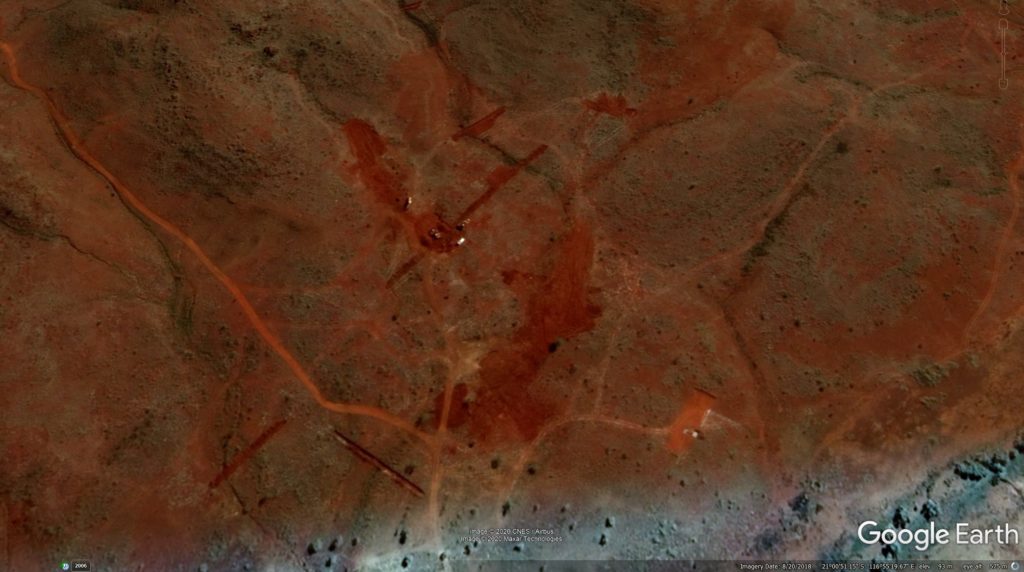
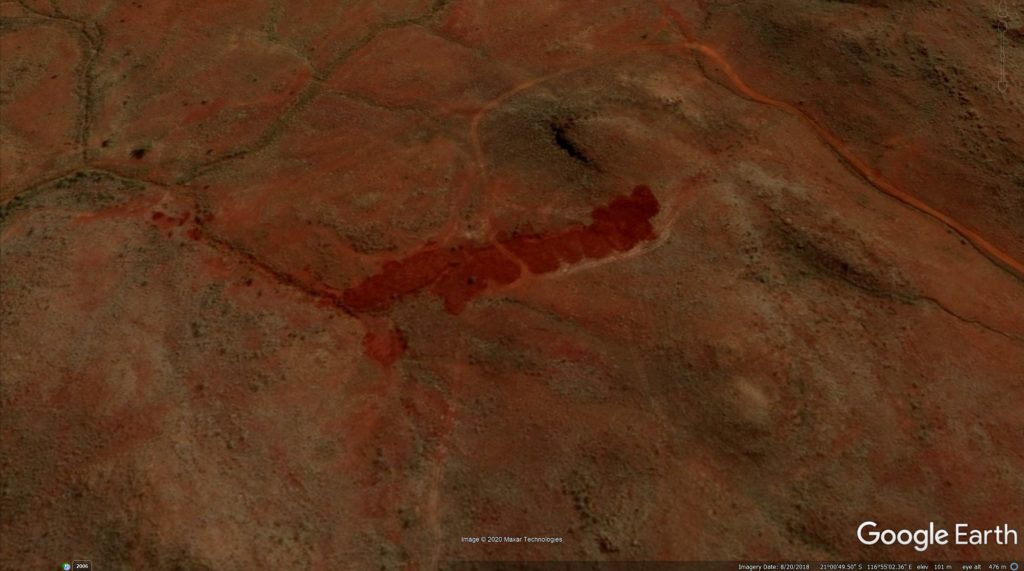
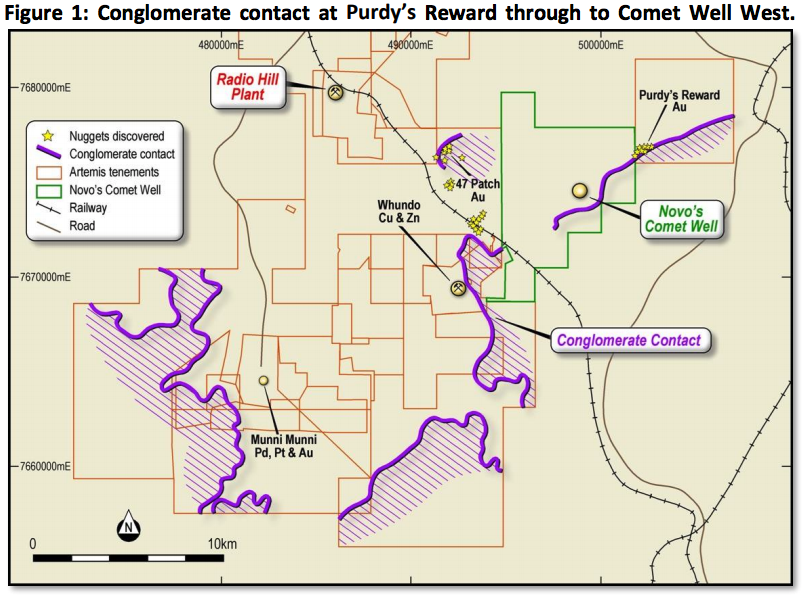
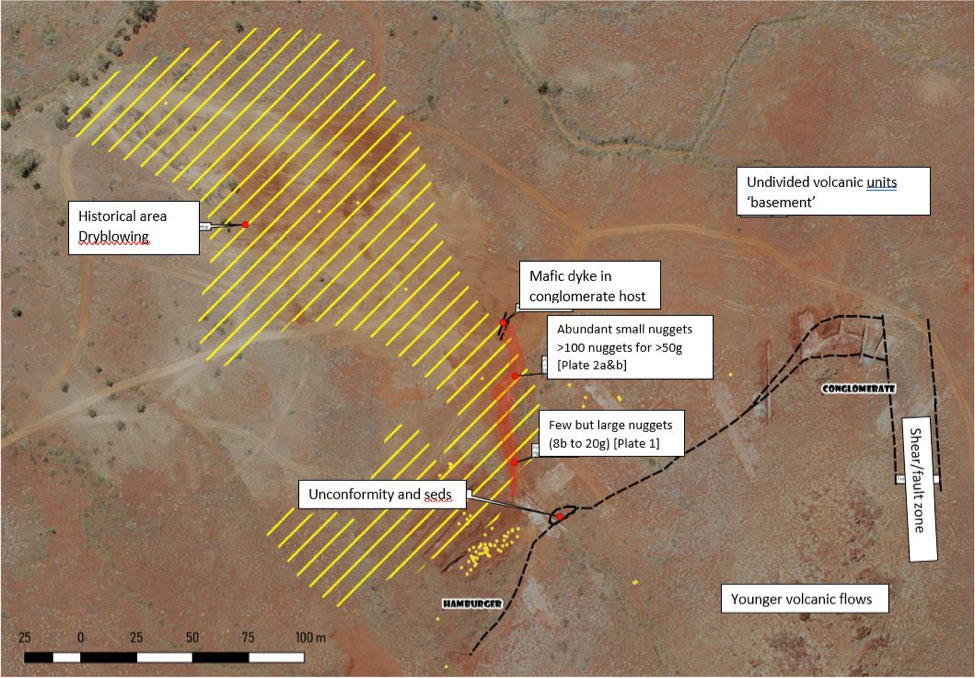
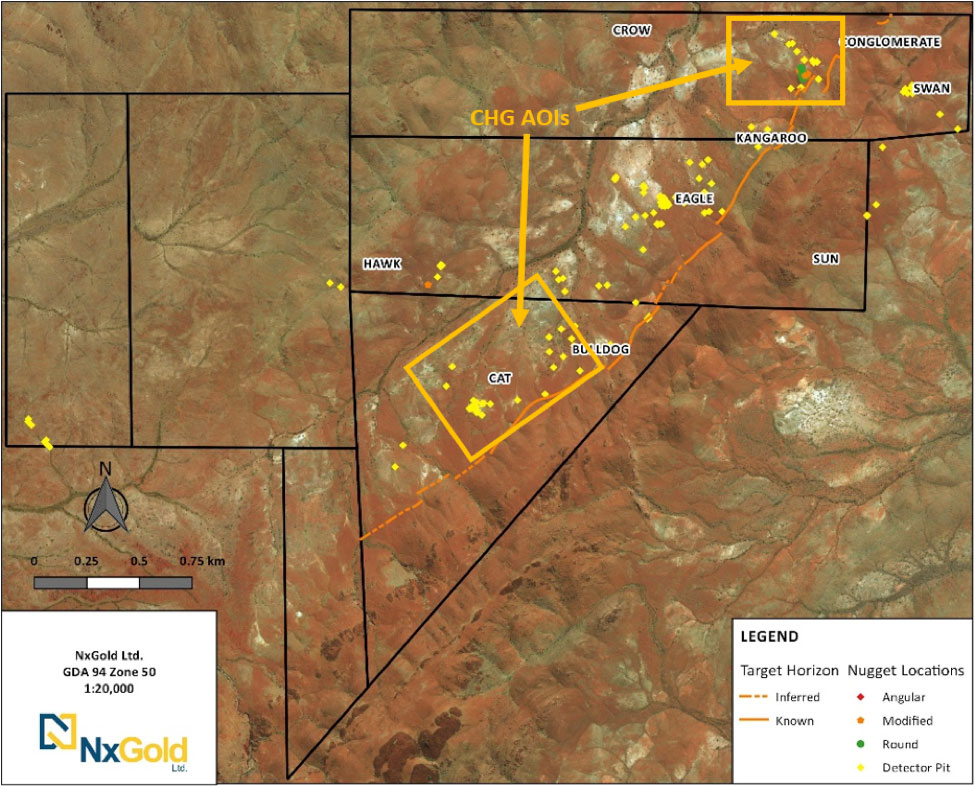
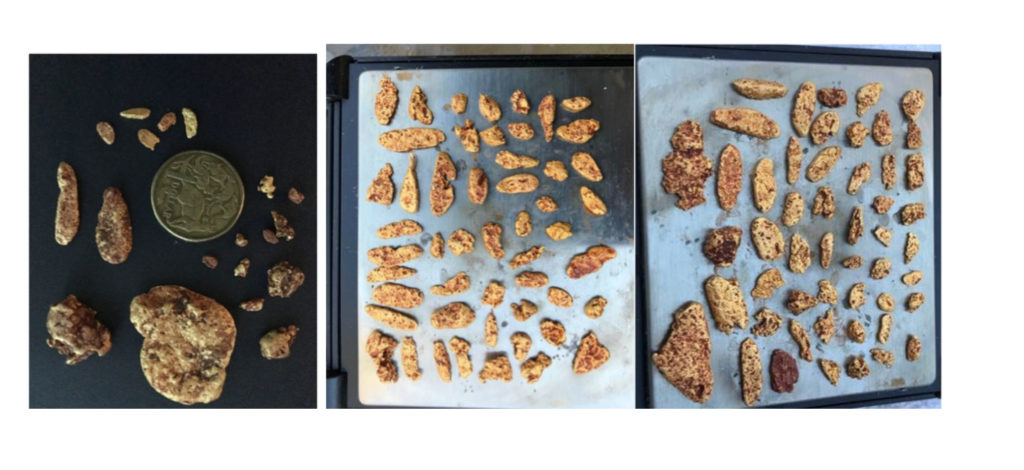
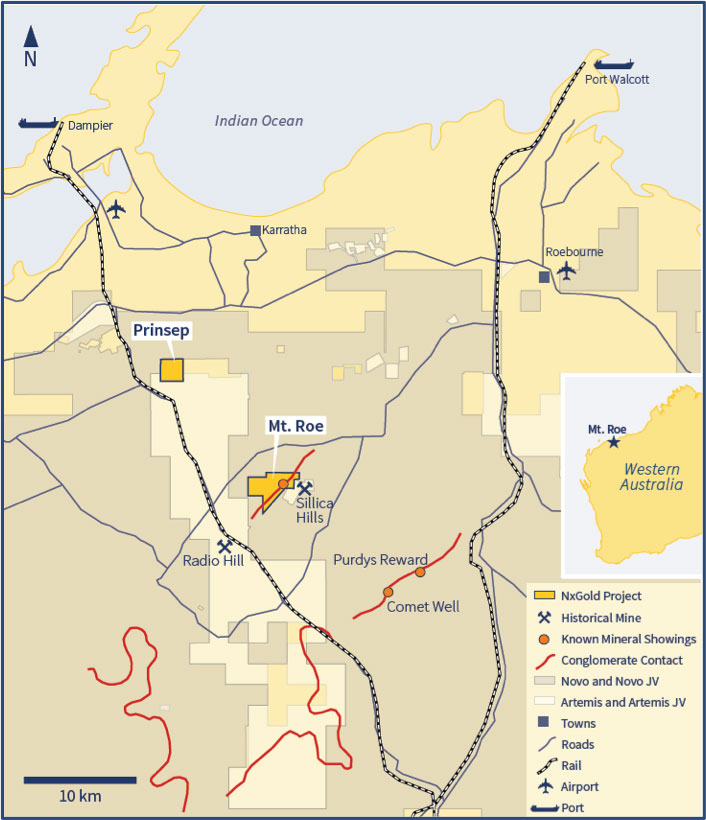
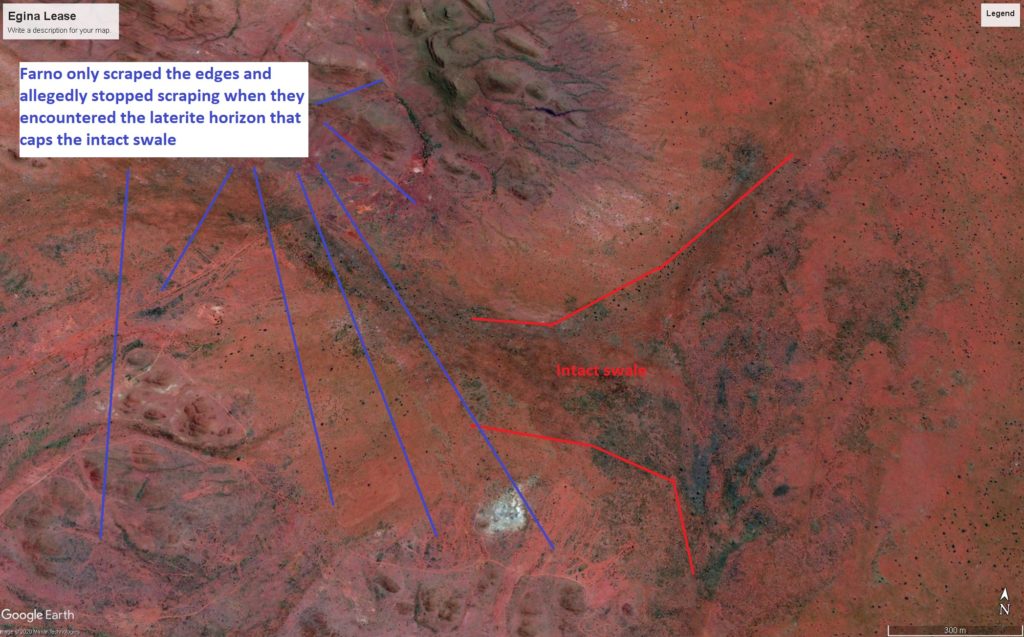
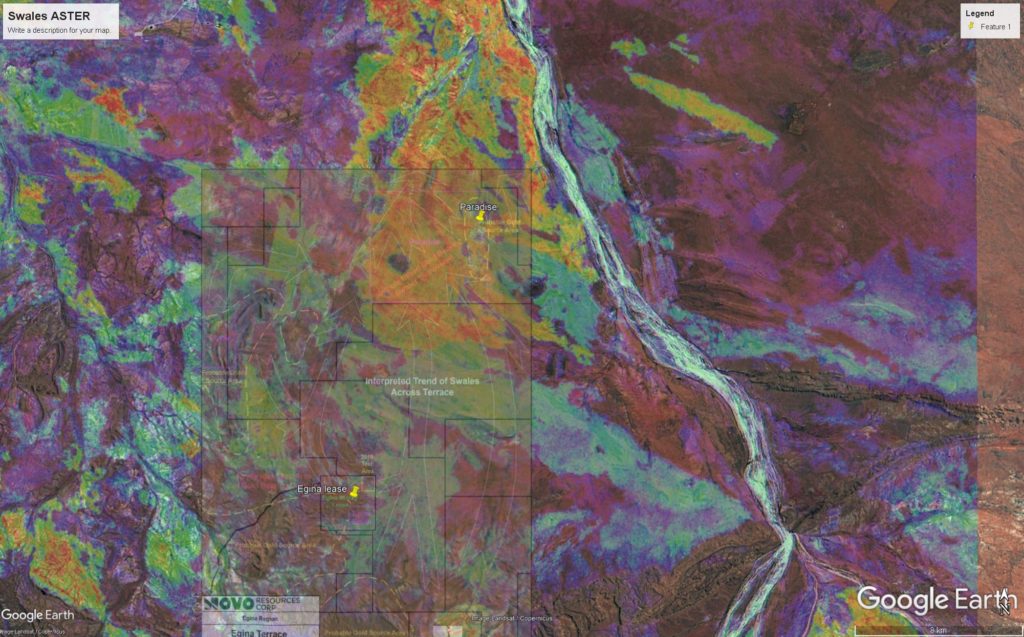
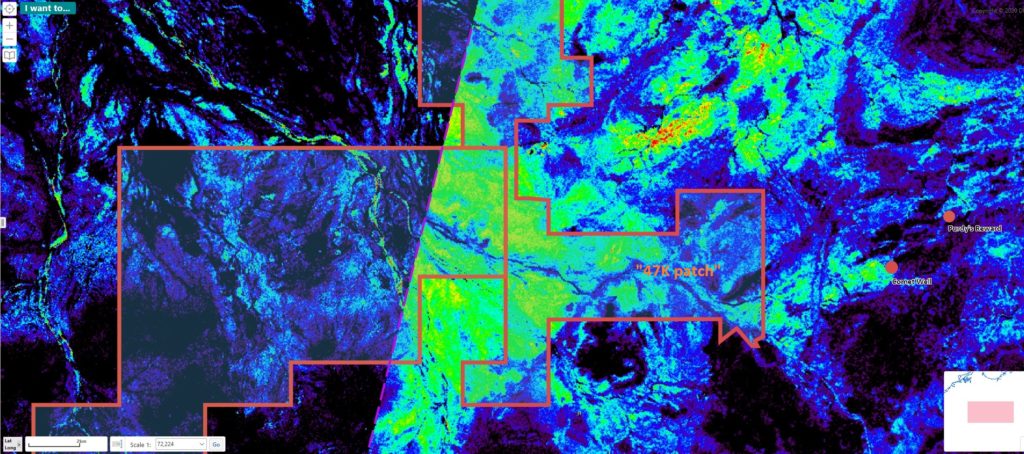
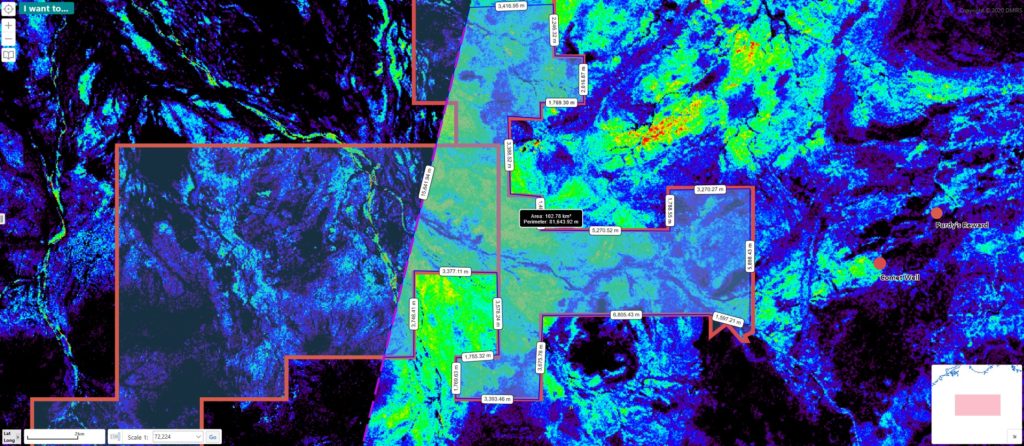
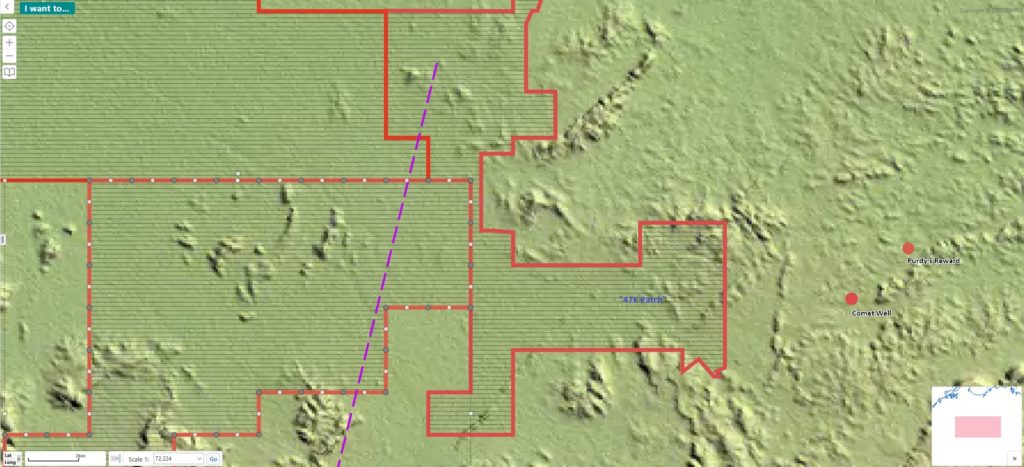
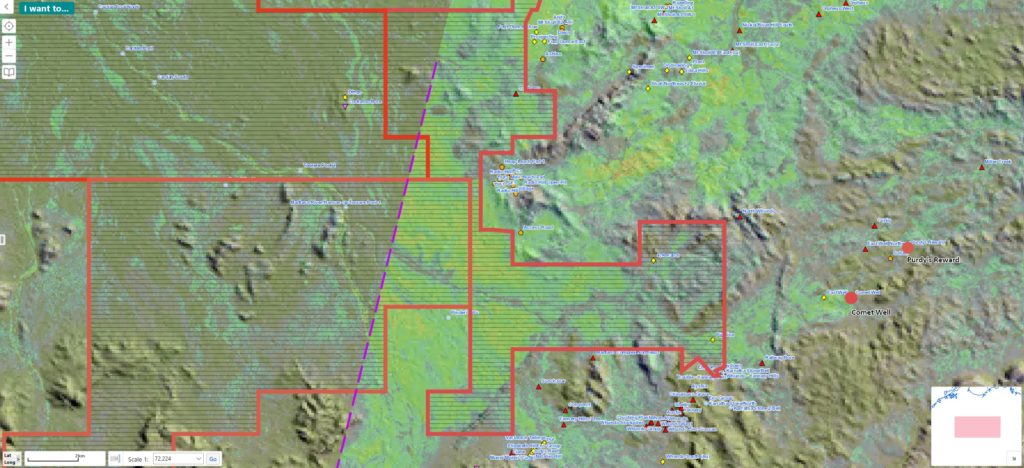
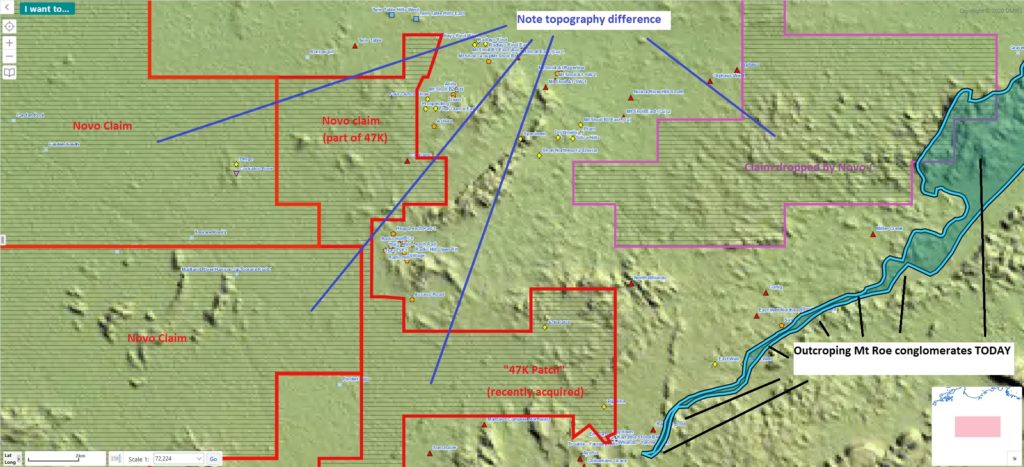
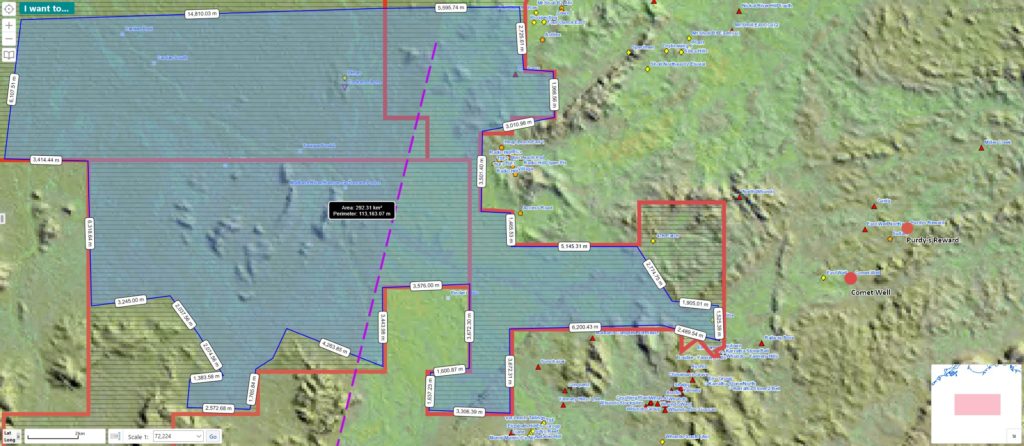
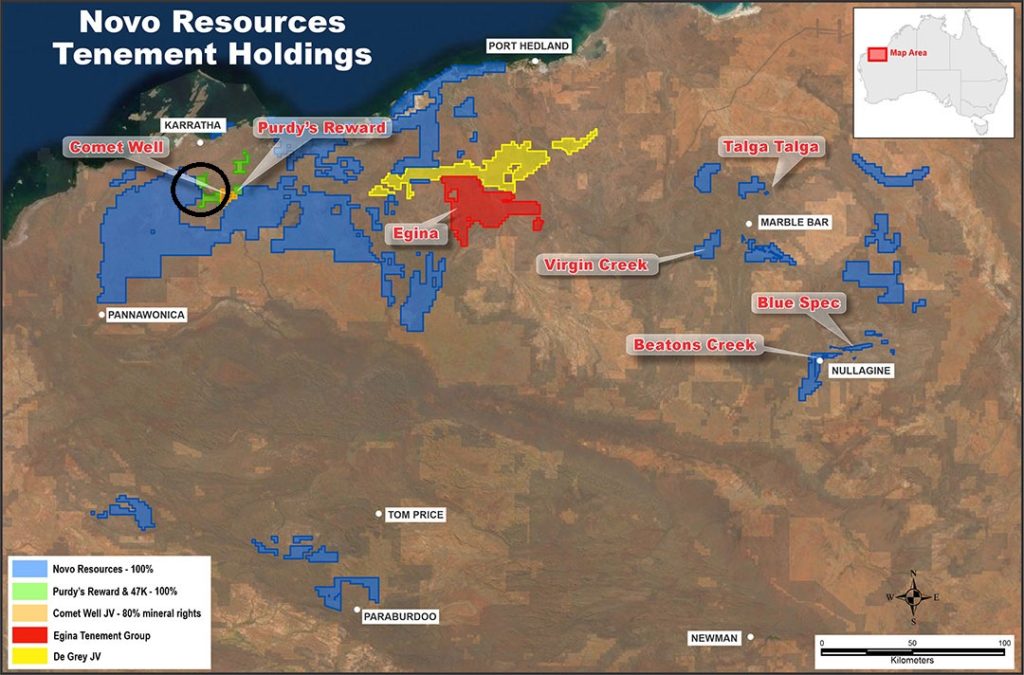
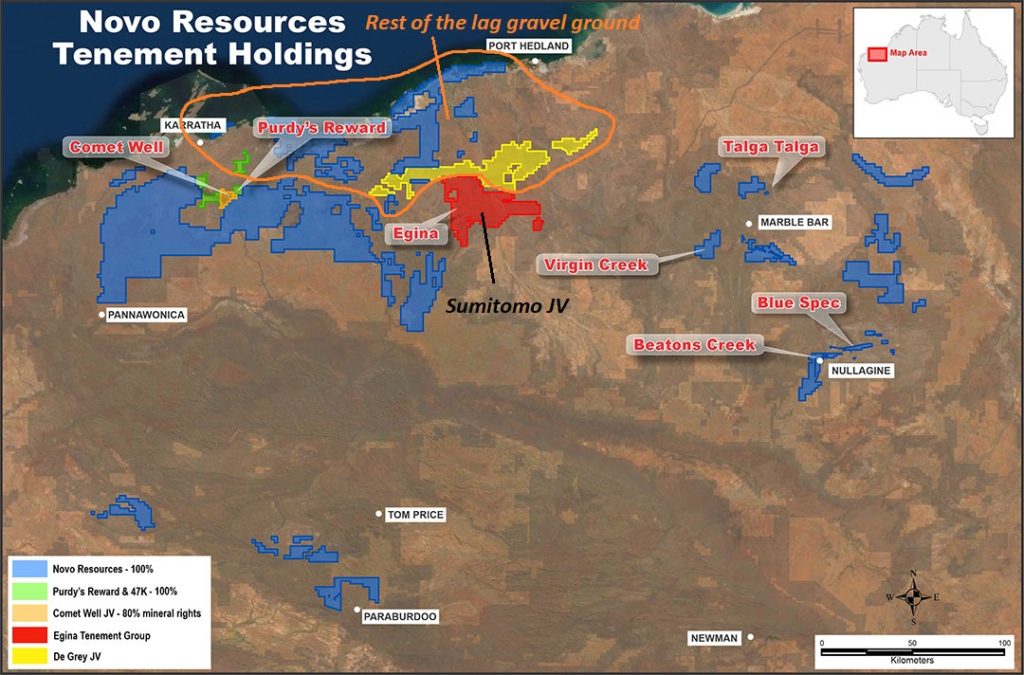
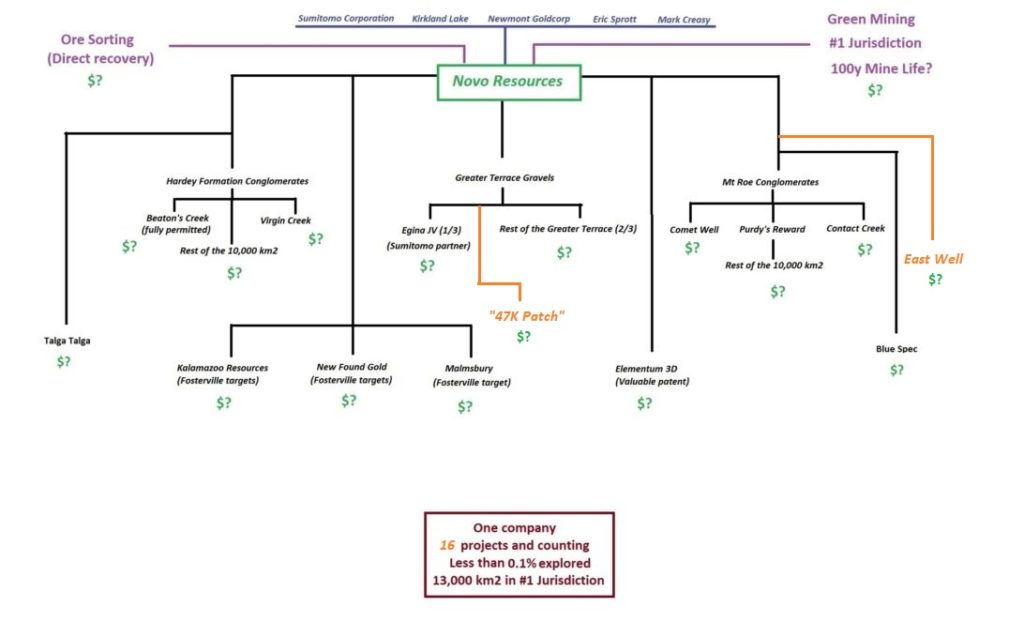
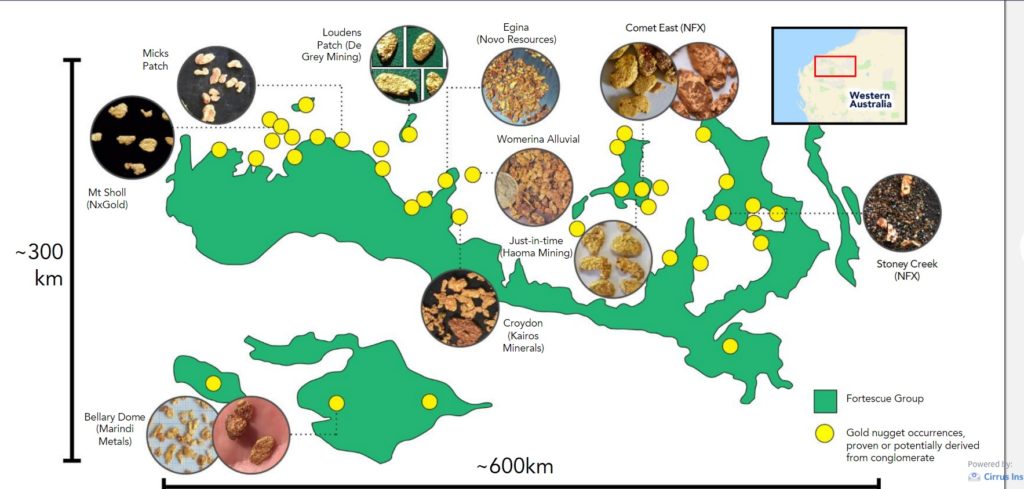
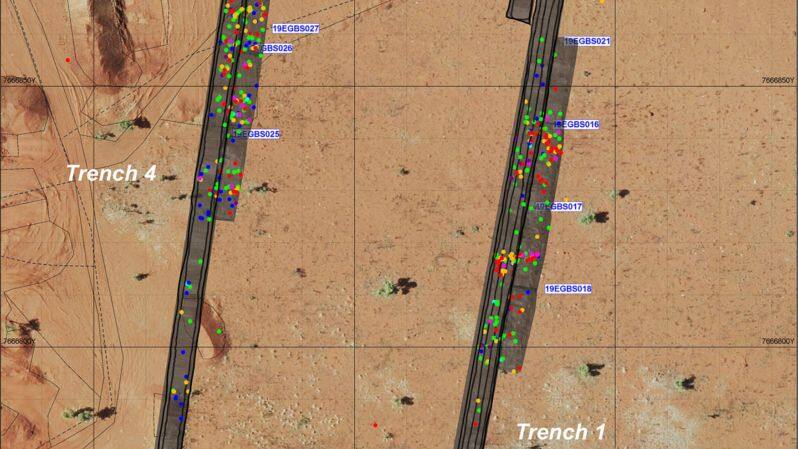
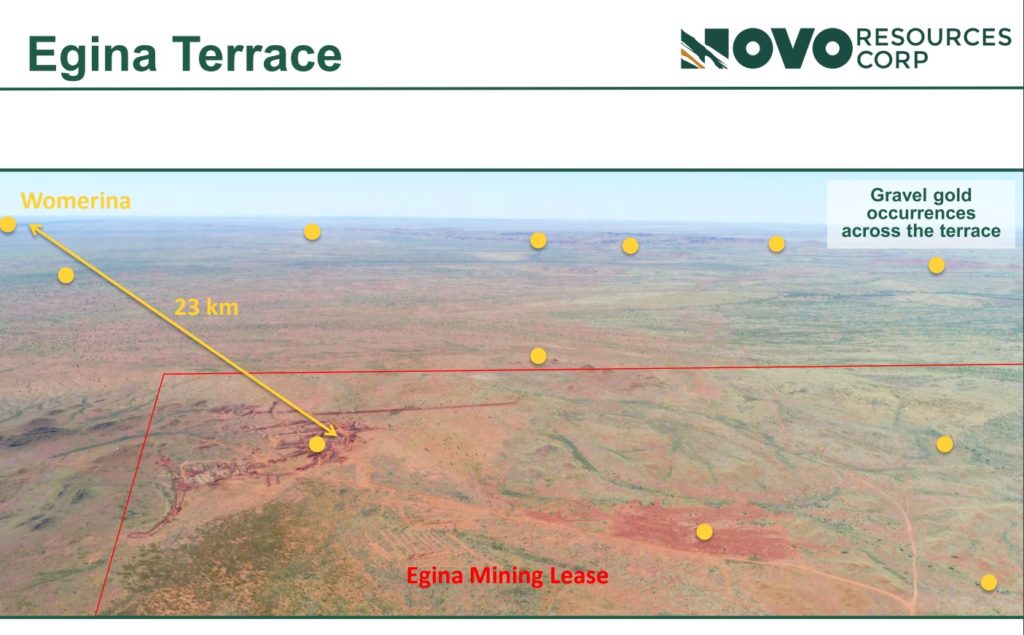
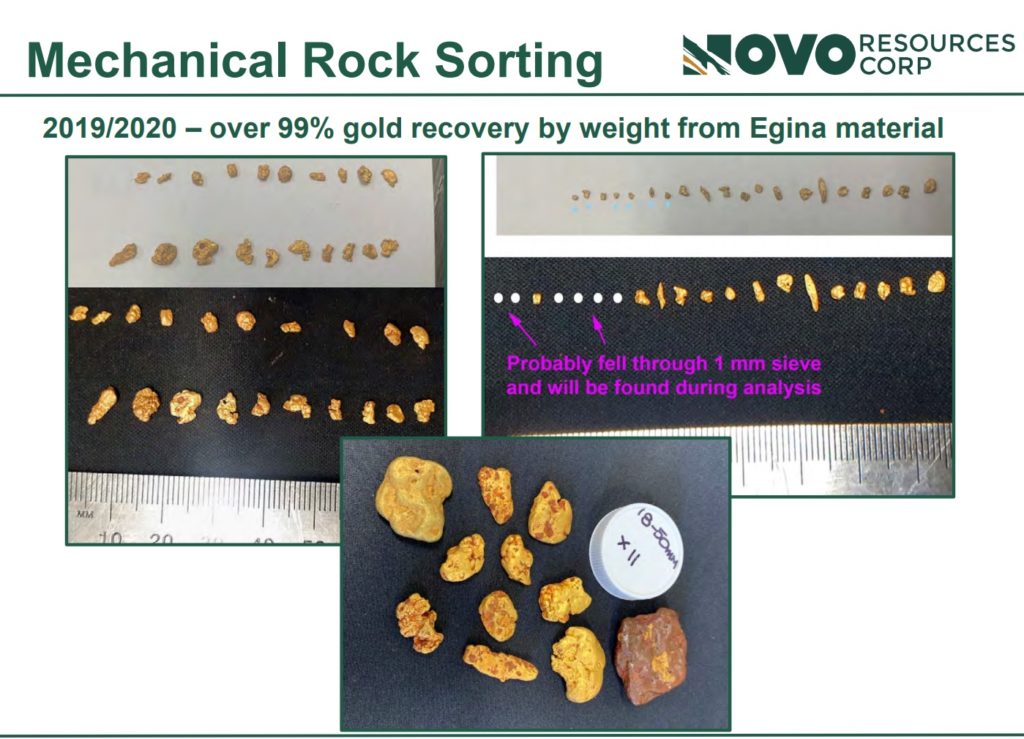

























Another amazing report, lots of speculation, but still very informative. Great work and thank you for the effort.
Sure is a lot of speculation! I don’t know if Novo will be worth $3 or $100+ hehe. As it stands now I think everything is lining up more and more for a future where Novo is worth a LOT.
All the best,
Erik
Hi Erik,
This is another outstanding article on Novo Resources. You have done exceptional work in bringing attention to the potential of what we have, to all concerned. Like you, I cannot understand how anyone who professes to be interested in gold mining, does not clamour for a piece of the action. A colleague once said to me, “You don’t know what you don’t know.” That adage certainly applies to Novo Resources. None of us, including QH and RH, know for sure what riches wait to be discovered.
I appreciate the way that management is tackling this assignment, taking one step at a time, to try to quantify the enormity of the project. As I stated before, there is no doubt that, in time, the share price will appreciate by orders of magnitude above current levels.
Best wishes
Harold Hester (De Beers pensioner)
“I cannot understand how anyone who professes to be interested in gold mining, does not clamour for a piece of the action.” … I fully echo your sentiment. I have no idea how anyone could not see if they took the time to dig into Novo. I guess that is the reason for the severe undervaluation in light of everything know to date… Nobody takes the time to understand the magnitude of this and how many signs there are confirming the scale and potentially obscene economics. I try to remind myself that if everyone saw it like we do then there would be no opportunity now for out-sized future returns :). “You want the market to agree with you later” is a quote I try to remember!
All the best and thanks,
Erik
Hi Erik,
Really enjoy all your Pilbara analysis.
Wondering if you have any thoughts on the Novo/Pioneer Resources JV? Tenement E47/3318 was due to be the focus of exploration activity, but after Novo’s latest announcement E47/3945 seems the obvious tenement to hit. If you follow the interpreted swale trend from the 2019 drill area in the Egina Mining Lease to “The road to Paradise” there is at least 7kms thru E47/3945, not to mention the other swale trend within this tenement to the right. I am a shareholder in PIO.
Another remarkable article on Novo spelling out yet another “small” area of their property and its blue sky opportunity. May your investigation, writing and investment lead to Novo riches. Selfishly, when you’re rich from Novo, I’ll be standing side by side with you!
Great analysis Horseman, your technical resources blended with up to date knowledge of the current advances Novo Resources has made in the Pilbara to present us with that critical big picture view of the Novo Resources value proposition is very much appreciated.
One thing I don’t understand is the history of NR and the Elementum 3D patent you refer to. Can you please explain it when you have time?
We should be calling you The Professor instead of The Horseman.